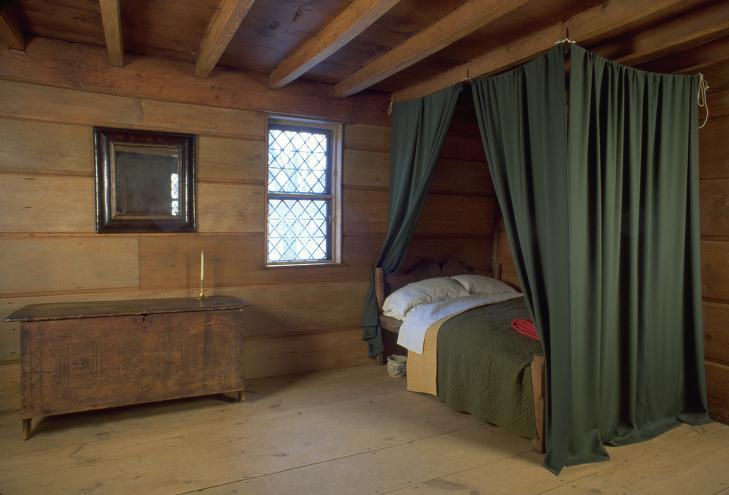|

Courtesy of Historic Deerfield, Inc., photography by Amanda Merullo
Private Space : Shared Space
|
|
Twentieth century American builders and homeowners assign names to rooms that reveal their intended public or private purpose: formal dining room, "eat-in" kitchen, living room, parlor, den, and bedroom. There also has developed over the last century a belief that individuals need private space apart not only from the outside world, but also from other household members. All of these concepts are relatively recent. In the early 1700s, even the notion of labeling rooms for public or private use would have been an unfamiliar concept to most Europeans.
The earliest English transplants to North America could afford neither the time nor the money to construct large homes with many rooms. Survival was the main business of the day. Even as later residents constructed larger and more elaborate dwellings, rooms in homes remained multi-purpose with little regard for personal privacy. Household arrangements of the early 1700s reflected the essentially communal culture of the period. In smaller houses, the entire household continued to cook, eat, work and sleep in one or two rooms. People of all ages and sexes shared sleeping areas and even beds. That one concession to personal privacy and comfort, the curtained bedstead, if in evidence at all, belonged to the head of the household and his wife. Such a bed was among the most expensive objects in the entire household. Rooms remained multifunctional even among more affluent households. Families used kitchens, for example, for cooking, eating, butchering, candle making, harness mending and a host of other activities, including sleeping.
The Wells-Thorn house in Deerfield, Massachusetts, exemplifies the way in which homes in the early 1700s merged public, family, and individual functions into one space. Ebenezer Wells was not a wealthy man, but he was certainly not poor. He owned a quantity of silver and he possessed some fashionable furniture at a time when many people did not own chairs or a table. He also owned two slaves. That he was a selectman also placed him among the town's elite. Note the way in which his furniture could be moved depending on how the room was to be used. Food was stored in the chamber in which he and his wife slept.
top of page
|
Wells- Thorn House chamber
|





